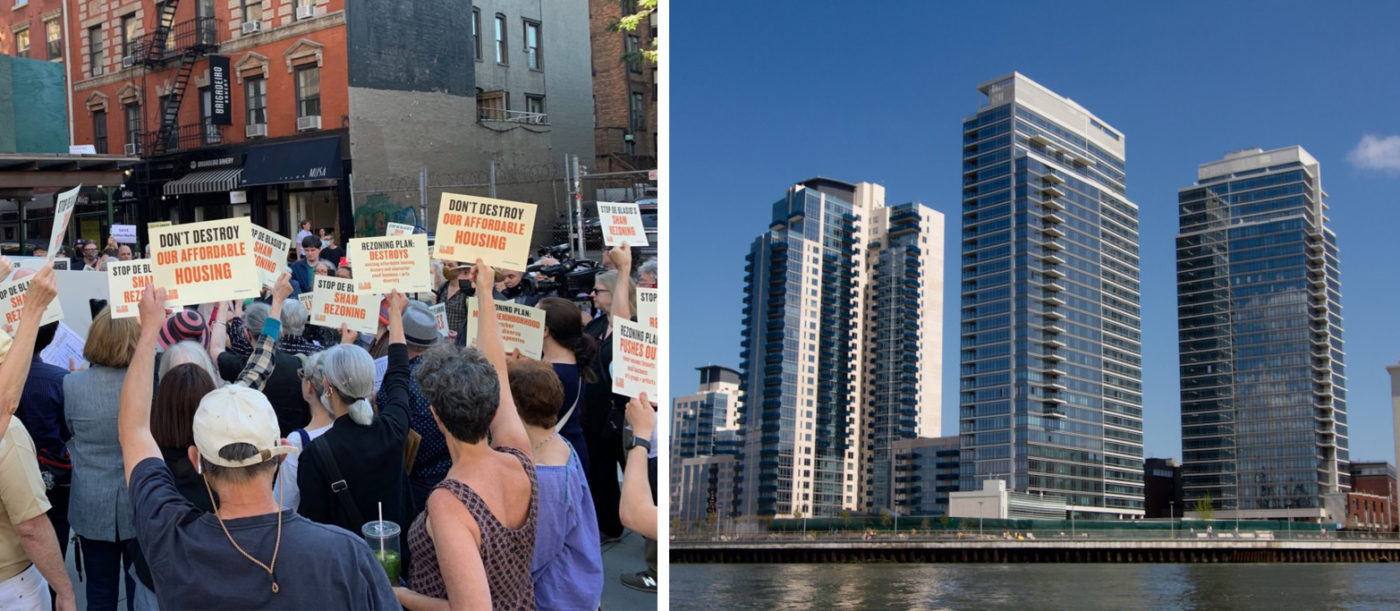YIMBY vs NIMBY: Looking Past Labels

A seemingly intractable housing affordability crisis has placed a dichotomous choice at the heart of housing policy debates: to build or not to build. An increasingly loud and politically influential coalition, YIMBYism (“Yes in my Backyard”) adheres to this framing, and supports all new residential construction as a primary tool for mitigating housing costs. In so doing, they cast all opposition to development plans as reflexive “NIMBYs” (i.e., “Not In My Backyard”), a term traditionally reserved for residents who resist the nearby placement of necessary infrastructure so as to avoid its negative impacts. Preservationists and skeptics of large-scale development projects, for their part, reject the label, pointing to specific perceived deficiencies that they accuse YIMBYs of casually disregarding in favor of unexamined, inflexible principles and often despite negative potential impacts on housing affordability.
Both sides see themselves on the side of social justice and housing equity. Perhaps as a result, they regard each other with suspicion if not contempt. “NIMBYs” get branded as reactionaries who zealously exclude on the basis of class or race in order to safeguard their own comfort and privilege; YIMBYs, as naive, self-interested dogmatists who wittingly or not operate as shills for the real estate industry. These, of course, are caricatures; but they have also become common currency in social media debates surrounding new redevelopment projects. Such exchanges would be easy to dismiss as irrelevant name-calling, had the Manichean pro-growth platform espoused by YIMBYs not begun to frame and shape housing policy discussion in the city. In light of this trend, we decided to look past the dead-end of vilification and hold a panel of experts, housing and urban policy specialists, some of whom have long studied NIMBY and YIMBY movements, to see what we can learn from this latest iteration of pro- and anti-development coalitions.
(a Webinar featuring: Bob Lake, Professor Emeritus in the Edward J. Bloustein School of Planning and Public Policy at Rutgers University; Hilary Botein, Associate Professor at the Marxe School of Public And international Affairs in Baruch College; and Max Holleran, Lecturer of Social Policy at the University of Melbourne)
The panel was organized around four questions:
First, how do we explain the newfound prominence of “YIMBYism” and “NIMBYism” in housing policy debates. Over the past ten years, the meaning of these terms has changed to now generally refer to pro- and anti-development factions. Such coalitions, however, have been a perennial feature of the urban development landscape and are probably best understood as alignments of interest rather than as coherent movements organized around a set of unitary principles. Are YIMBY and NIMBY, then, just a continuation of the same, with catchy labels attached to them, or do they represent something new? And, if so, what?
Second, the YIMBY and so-called NIMBY coalitions disagree over a crucial empirical matter, the relationship between increases in new market rate housing and housing affordability. For YIMBYs, they’re positively related. That is, the greater the increase in market rate housing, the greater the affordability, because an increase in (even luxury) housing is supposed to mitigate demand for the existing housing stock, leading housing prices to decrease across the board, as available units filter down the market. YIMBYs’ critics reject this claim, pointing to factors that can negate this filtering effects and even lead new construction to have an adverse impact on local affordability. You can find empirical evidence to support both propositions. How applicable are these studies to New York, and to what extent can we hold them up against the public’s unsystematic but nonetheless compelling personal experiences with new construction in familiar neighborhoods?
Third, why is housing development conflict taking this form? What do the terms of this debate tell us about how we plan housing, about how we manage the planning process, and about how we plan our cities and our economy?
Our panelists were each assigned to one of the above questions, and they were all then asked, first, to consider the uses and limitations of the YIMBY / NIMBY framing for reconciling housing needs with other dimensions of urban life — including the diverse values that we attach to our neighborhoods — and second, to identify more productive alternatives, bearing in mind that part of what has animated the YIMBY/NIMBY debate has been the perceived constraint of the politically possible.
In addressing the questions above, the panelists offered numerous insights into the affordability crisis, into housing policy, and into the politics of affordable housing production. Max Holleran discussed the origins of YIMBYism, describing the phenomenon as a middle-class, professional movement of millennials, many of whom feel priced out of desirable urban neighborhoods. Despite a genuine diversity in its ranks, the group, according to Holleran, happens to count real estate interests among its loudest voices. Looking at the housing landscape in New York, Hilary Botein depicted a fragmented market with vacancy rates reaching crisis levels only at the bottom. She found little reason to expect market rate housing, either through the filtering process described above or through cross-subsidies of affordable housing, to make a dent in the affordability crisis. Finally, Bob Lake argued that the YIMBY/NIMBY labels confuse the complicated politics of urban redevelopment and risk lending a veneer of legitimacy to any residential development, however minimal or deleterious its impact on housing affordability. Inclusionary housing programs, he warns, have become the means through which we push through development, rather than a means for addressing housing needs.
We invite you to watch this incisive panel in full here and to send us comments, questions, and suggestions for future panels at info@villagepreservation.org.
